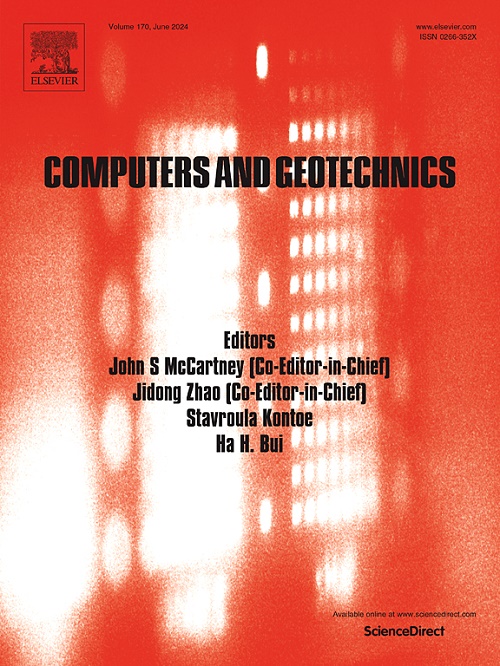Bayesian updating of geotechnical parameters with polynomial chaos Kriging model and Gibbs sampling
IF 5.3
1区 工程技术
Q1 COMPUTER SCIENCE, INTERDISCIPLINARY APPLICATIONS
引用次数: 0
Abstract
Due to the complex nature of site conditions and the influence of deposition conditions, aging, environmental exposure, and characterization techniques, the calibration of geotechnical parameters is significantly uncertain. The present study introduces a Bayesian updating method for geotechnical parameters to address the issues of parameter uncertainty and incomplete parameter information. Developed by combining a high-fidelity Polynomial Chaos Kriging (PC-Kriging) model with the Gibbs sampling method, this approach uses Least Angle Regression (LAR) to construct the Polynomial Chaos Expansion (PCE) coefficients, incorporating PCE as the trend function in the Kriging method to build the PC-Kriging model. The proposed method can avoid the computational challenges involved in Bayesian inference using dense numerical models, effectively reducing computational costs while obtaining the posterior distribution and statistical information of the model. This study primarily applies the proposed PC-Kriging-Gibbs (PCK-Gibbs) method to geotechnical engineering issues. The method is validated on two critical dynamic soil problems: Horizontal-to-vertical spectral ratio (HVSR) inversion and equivalent linearization in site response analysis. Meanwhile, the Kriging method and PCE were also used to verify the feasibility and computational efficiency of the proposed method. The posterior distribution samples of the model parameters obtained show good consistency between the sample means and actual values, significantly reducing the uncertainty of shear wave velocity. Compared to Bayesian inference analysis using only the Gibbs method, the proposed method dramatically decreases computation time while maintaining satisfactory results, providing a powerful computational tool for parameter updating in geotechnical engineering.
求助全文
约1分钟内获得全文
求助全文
来源期刊

Computers and Geotechnics
地学-地球科学综合
CiteScore
9.10
自引率
15.10%
发文量
438
审稿时长
45 days
期刊介绍:
The use of computers is firmly established in geotechnical engineering and continues to grow rapidly in both engineering practice and academe. The development of advanced numerical techniques and constitutive modeling, in conjunction with rapid developments in computer hardware, enables problems to be tackled that were unthinkable even a few years ago. Computers and Geotechnics provides an up-to-date reference for engineers and researchers engaged in computer aided analysis and research in geotechnical engineering. The journal is intended for an expeditious dissemination of advanced computer applications across a broad range of geotechnical topics. Contributions on advances in numerical algorithms, computer implementation of new constitutive models and probabilistic methods are especially encouraged.
 求助内容:
求助内容: 应助结果提醒方式:
应助结果提醒方式:


